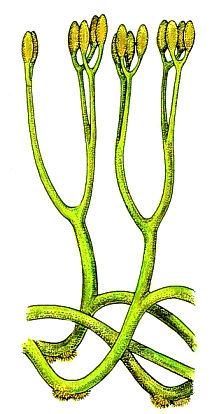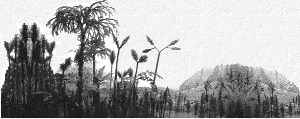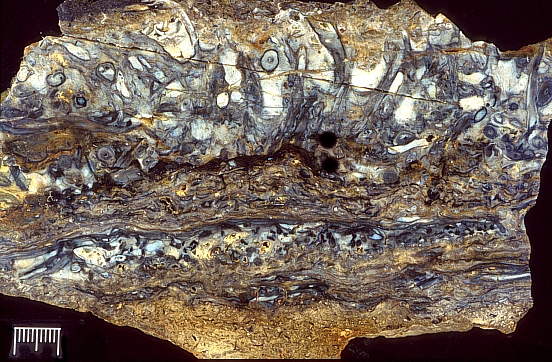 |
The vascular land plants were small,
ca. 10 to 40 cm high. Except for one species, all higher land plants
were leafless and all had bifurcating aerial axes with terminally and/or
laterally attached sporangia with thick multilayered walls. All
species
had clonal growth which means that aerial axes (daughter plants) developed
from the rhizomatic axes of the mother plant. Each species had its
characteristic growth form, which indicates that each was well adapted
to a specific habititat. Some species had long-living aerial axes
whereas others had seasonal aerial axes. Two species lived entirely
subaerial (Rhynia gwynne-vaughanii und Aglaophyton major),
two had a subterranean rhizome (Nothia aphylla, Horneophyton
lignieri),
whereas ones species had roots which penetrated the soil (Asteroxylon
mackiei). Adaptations of these early land plants to the substrate
and the available groundwater were apparently still limited. Each
species has water-conducting cells with very typical wall thickenings that
are very different from those of later vascular plants.
The systematic position of a number of species is
problematic,
not because they are not well known but rather because suprageneric groups
are poorly defined. There is still much discussion on the
classification
of some of the Rhynie Chert plants. At least two of the six natural
species are classified within the group of the Rhyniophytes, one within
the Zosterophyllophytes and one among the earliest lycopods. Some
of the Rhynie Chert plants will be briefly introduced on the following
pages.
Left: Reconstruction of Aglaophyton major, one of the most common
plants in the Rhynie Chert |



